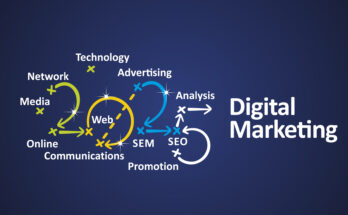Nature’s adaptation strategies have been effective for over 3 billion years. However, annual marketing plans are often feared and undervalued. Marketers should follow nature’s approach to change. Accurate forecasting is crucial, but markets are volatile, uncertain, complex, and ambiguous, making planning difficult. Despite effort, an annual marketing plan is often outdated when released.
This lack of predictability regarding the future adds to the stress that businesses experience while trying to finalize preparations. Internal political disputes, fear of funding, competing agendas, moving goals, and concern over impending major changes like artificial intelligence are some of the challenges that arise. However, planning is required to progress the enterprise mission and is crucial for coordination.
Taking note of how nature adapts to change
In his book “The Clock of the Long Now: Time and Responsibility,” Stewart Brand examines how ecosystems in nature adjust to change at different rates. Inspired by Freeman Dyson’s work, Brand proposes a pace-layered model where elements change quickly and slowly, resulting in resilience. This multi-paced evolution, like the tree crown in a conifer forest, allows the system to withstand stresses like parasites and weather.
Layering the marketing plan at a pace
Using nature’s process, Brand’s six-layered model offers a comprehensive guide for a civilization in good health. Even though such an ambitious aim is unlikely to be pursued by organizations, marketing still needs to employ layered thinking. Determining the appropriate shift pace for each project is crucial.
Consider elements that vary often when making plans
The top layer of the model, referred to as fashion, is responsible for being quick and engaging, adapting to customer behavior. This includes digital campaigns, creative execution, content, and sales plays. Brand emphasizes that these activities should be free to experiment as much as society allows, allowing for better learning, innovation, and the ability to capitalize on emerging opportunities.
A pace-layered marketing plan can be successful by adopting a flexible approach, with budgets and intervals being rented for a quarter instead of a year. Agile teams can benefit from this practice, as it allows them to adjust quickly. However, it may take time for organizations to adjust to this flexible process. Regular checkpoints, data sharing, and dialog are essential for success. Empowering teams closest to customers is crucial for quick response to changes and a better understanding of the situation.
Update the major programs and overall marketing budget
The second layer of Brand’s model is commerce, which is driven by innovation and learning from the top layer. Commerce resources the other layers and distributes funds to the overall marketing budget. An annual calendar is used to prepare enablement packages, communicate priorities, set KPIs, and establish content and editorial calendars. Major campaigns, sales playbooks, and events are also set in motion annually. This layer contains workstreams for multi-year initiatives.
multi-year programs
The brand’s model consists of three layers: infrastructure, governance, and culture. These layers are resistant to instantaneous change and evolve gradually, unlike fast-paced fashion and commerce. Businesses can find this slow pace frustrating, but they benefit from it for certain tasks. Infrastructure, governance, and culture are the remembering layers, providing structure, coherence, and guidance to the system.
A company’s culture, infrastructure, and sales compensation plan can benefit from a more measured pace. A replanning every three to five years can help implement initiatives in these layers, which can be divided into six-month or quarterly investment and workstream cycles. These initiatives include brand strategy, incorporating new technologies, preparing for new generations, and adapting to regulatory changes and media trends.
Layered marketing plans that are successful at pace
Marketing leaders who have embraced a pace-layered planning approach have identified success factors. This involves two-way conversations between business-oriented leaders, considering marketing, the company, and the market. While some selfishness is acceptable, leaders should be passionate about their area and manage conflict effectively.
To maintain optimal system health, all layers must be balanced, with no layer dominating. Budget and staffing resources are crucial for achieving desired outcomes. The saying by Warren Buffet, “Time is the enemy of the mediocre, and the friend of a wonderful company,” emphasizes how crucial marketing and time management are in the business world.



